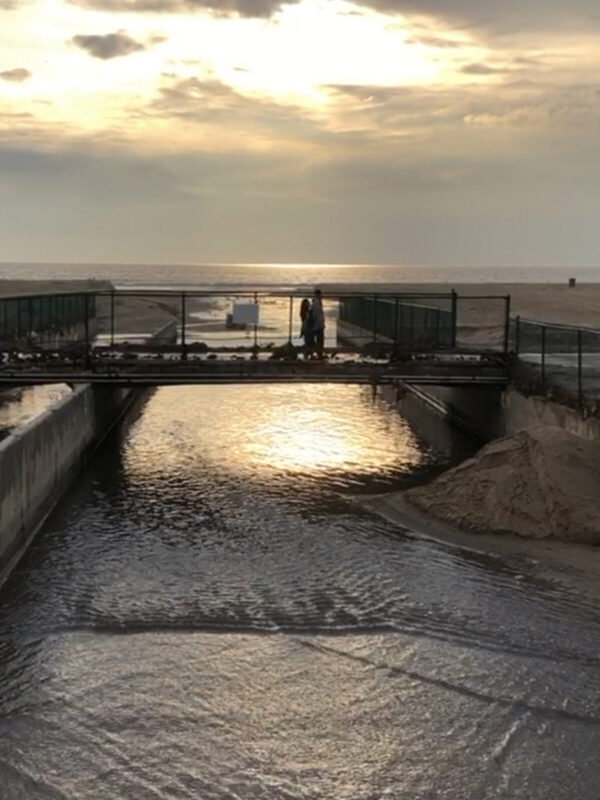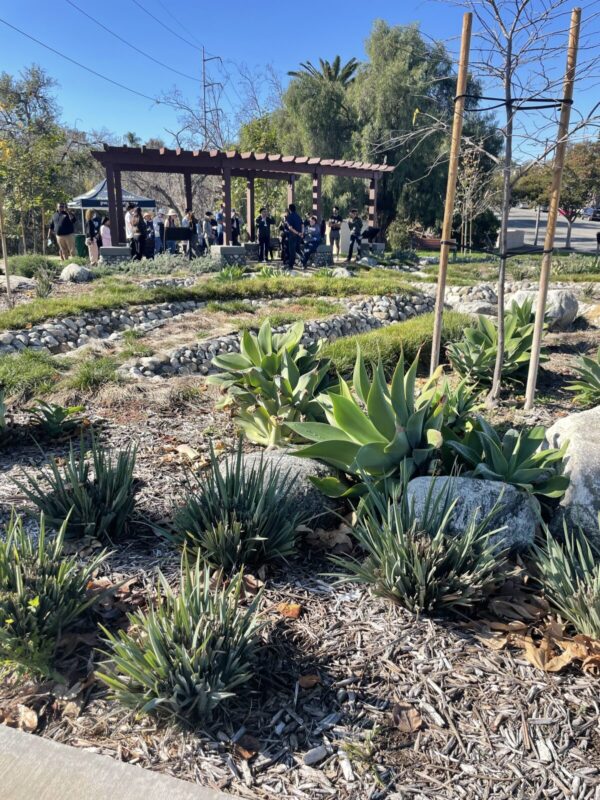Drought or flood? Can both be true at the same time? Yes, and here’s what you need to know with Heal the Bay CEO Tracy Quinn in Part 2 of our 3-part series, Commit to Conservation.
RECENT DRAMATIC STORMS, known as atmospheric rivers, have caused major damage including flooding, mudslides, and sinkholes. Up in the mountains, the California snowpack is 208% of average for this date and Mammoth Mountain is having its second snowiest January on record. We are receiving record precipitation this year which can be good for our water supply but the drought is not over. We know it is confusing, but it doesn’t have to be. Here are 3 things you need to know about water supply in CA.
Drought & Water Supply Recovery – 3 Limiting Factors
First, we started this year with a huge water deficit. About 40% of California’s water supply comes from groundwater and we have been over pumping our groundwater supplies for decades. When we don’t get enough surface water (i.e., rain and snowmelt that flows to our streams, rivers, and lakes), water users – mostly agriculture – use even more groundwater. And because 19 of the 20 hottest years on record have occurred since 2001, and groundwater has been largely unregulated in California, our groundwater supplies have significantly declined. In fact, in the last 100 years, California drained enough fresh water to provide every person on Earth with a 30-year supply of drinking water. According to the USGS, it would take about 50 years to naturally recharge our groundwater supplies.
As Charming Evelyn, Sierra Club Water Chair, explains above, we’ve pumped so much groundwater that the land has sunk – in some places over 28 feet. It’s a phenomenon called “subsidence.”
Second, we can’t be certain that our immense snowpack will translate to full reservoirs that will carry us through the summer and fall when we need it most. California gets about 30% of our water from the snowpack in the Sierra Nevada mountains and our water system relies on the snow melting slowly over the spring and summer, filling reservoirs as water is discharged to meet the needs of our homes, businesses, and farms and leaving enough to get us through the fall until it rains and snows again. Unfortunately, climate change models have predicted, that we will now see early snowfall followed by unusually warm springs – in fact, this is what we saw last year. Between sublimation (snow evaporating off the mountain), overgrown forests with thirsty trees, and exceptionally dry soils, only a small fraction of our frozen reservoir (i.e., the snowpack in the Sierra Nevada and Colorado Rocky Mountains) even reached the lakes and reservoirs that supply our statewide water system. The same may happen this year.
While we watch California reservoirs rebound after 2 decades of drought, Lake Mead on the Colorado River, where SoCal gets about 30% of its water, remains critically low. According to Brad Udall, a water and climate researcher at Colorado State University, we would need five or six years of 150% snowpack to refill Lake Mead and Lake Powell, the major reservoirs along the Colorado River. Brad says we have to continue to plan for the worst year, and we agree!
- Uncaptured stormwater flows into Santa Monica Bay after Winter rainfall. Source: Heal the Bay
- Ladera Park’s stormwater capture garden adds beauty to picnic area. By Bria Royal/Heal the Bay
Third, we’re not capturing all this rain. In the first three weeks of 2023, Los Angeles received over 8 inches of rain, which translates to about 568 billion gallons of water. Much of this water falls on impervious surfaces like roofs and streets, picks up pollutants from cars, pet waste, and trash and flows briskly to the nearest stormdrain and eventually out to the ocean. Recent investments helped us capture 33 billion gallons of this winter’s rainfall in Los Angeles County, but the majority of this precipitation is still flushing out to the ocean through stormdrains and rivers. Heal the Bay has been at the forefront, working to make sure we pursue new capture projects that offer multiple benefits through LA County’s Safe, Clean Water Program.
👉 Get involved: Learn more about the stormwater projects featured in this post.
Managing Water Supply and Usage
Now is not the time to take our foot off the accelerator when it comes to saving water. Every drop of water we save now is a drop that will be available to us for essential uses during the dry times ahead. And remember, saving water saves energy – especially if you are reducing your use of hot water. So using less water helps save money on your utility bills and helps fight climate change! Here are our top water saving tips you can do to create climate resilient communities.
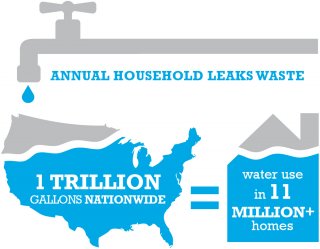
Source: EPA.gov
1. Install a FLUME device. Flume is a product that you can easily install on your water meter that sends water use data straight to your phone and can even alert you to a leak. According to the EPA, Americans lose 1 TRILLION gallons of water through household leaks each year. Right now, LADWP customers can get a FLUME device for just $24 (plus tax). Get personalized information on how you can save water right from an app on your phone!
2. Transform your thirsty turf landscape into a beautiful native garden. Did you know that the number one irrigated crop in America is turf grass? In Los Angeles, 50% to 70% of our drinking water (most of which we transport from hundreds of miles away) is used to irrigate landscapes, mostly grass that isn’t suitable for our climate. Right now LADWP customers can get up to $25,000 to remove the turf grass around their home. What can you do? Sign up for the rebate, remove your “non-functional turf” and replace it with a landscape that captures stormwater, maintains healthy soils, and is full of native plants to reduce your home’s irrigation demands:
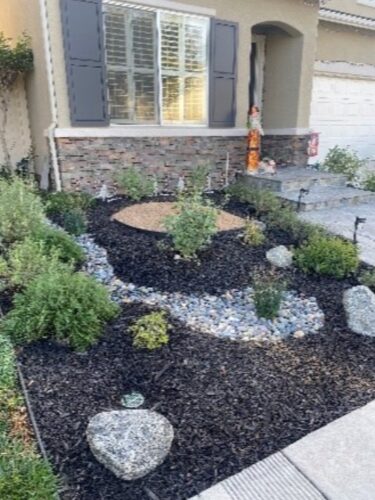
A bioswale can capture water for home landscaping. Photo by Tracy Quinn/Heal the Bay
- Connect your roof gutters to a rain barrel or bioswale and grade your landscape to capture the rain that falls on your property instead of letting it run into the street. This also prevents pollution like dirt and oils from cars and pet waste from reaching our rivers and beaches.
- Maintain healthy soils because they retain more water. Healthy soils also capture and store carbon helping to mitigate the impacts of climate change.
- Plant native plants, which, in addition to benefiting your water supply, can help maintain SoCal’s incredible biodiversity by providing food and shelter for birds, bees, and butterflies. This is especially important as our planet is currently facing a mass extinction event because human activity has reduced natural habitats. Find locally appropriate native plants here in Los Angeles at Theodore Payne Nursery.
💬 ASK THE EXPERTS: Should I replace my grass with artificial turf? Short answer – No! Artificial turf is usually made from plastic, prevents insects from digging and aerating soils, pollutes the soils underneath it and the water that runs over it, and can contribute to extreme heat issues. For even more reasons to avoid it, check out this article.
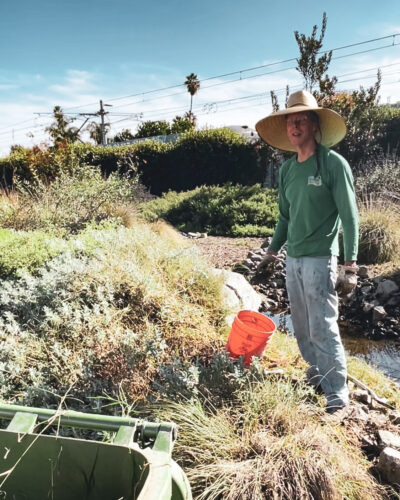
The Westwood Neighborhood Greenway is maintained by volunteers who restore native plant species near the Westwood/Rancho Park E Line station in support of local biodiversity. Photo by Bria Royal/Heal the Bay
3. Start a water-wise lifestyle trend in shared living spaces. Not a homeowner? Not a problem! Whether you’re renting an apartment or living in a student dorm, there are still plenty of daily actions we can all take to use less water. Check out more water savings tips for shared living spaces. And never underestimate the power of collective action. You can talk to your neighbors about the benefits of native landscaping, and collectively approach your landlord to request that they replace the turf in your complex. Suggestions from several tenants along with enticing rebates could sway your landlord and land you with some beautiful new outdoor vistas.
💥#Commit2ConserveChallenge: Once you’re ready to take action, download the Dashboard.Earth app for step by step guides, links to rebated materials, and an easy-to-use checklist curated by Heal the Bay and Metropolitan Water District. With our ONE Water Pledge, you can begin tracking your progress in managing your home’s water supply and usage. Then, share your progress on social media to spread the word.
ACTION LINK(S)
💥 GET THE APP – DASHBOARD.EARTH
Written by Tracy Quinn. Leading a dynamic team of scientists, policy experts, outreach specialists, educators, and advocates in pursuit of its clean water mission, Heal the Bay CEO Tracy Quinn is responsible for setting new science and policy goals, expanding Heal the Bay Aquarium as the premier marine science education destination in Southern California, and increasing community action throughout Greater LA. Tracy has dedicated her life to improving water quality in our rivers and ocean and ensuring safe, reliable, and affordable water for all Californians.




